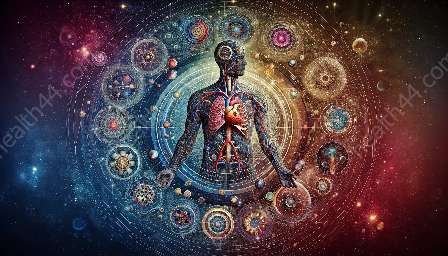Pharmacology and physiology constitute two intertwined branches of medical science, essential for understanding the intricate relationship between drug actions and body functions. By exploring this connection, we gain valuable insights into how medications affect the body and how the body, in turn, influences the actions of drugs.
The Basics of Pharmacology and Physiology
Pharmacology focuses on the study of drugs, their mechanisms of action, and their interactions with living organisms. It encompasses various aspects, including drug composition, properties, reactions, toxicology, and uses in treating diseases. On the other hand, physiology delves into the functioning of living organisms, exploring the processes and activities that sustain life.
Understanding the intricate connection between pharmacology and physiology is fundamental in the field of health education and medical training. Here, we explore the interplay between these disciplines and their crucial role in advancing medical science and patient care.
Unveiling the Link between Drug Actions and Body Functions
The relationship between pharmacology and physiology becomes evident when we analyze how drugs interact with the body. Drugs exert their effects by interacting with specific targets within the body, such as receptors, enzymes, and cellular structures. This interaction triggers a cascade of physiological responses, which can either alleviate or exacerbate disease conditions.
Furthermore, a comprehensive understanding of pharmacology and physiology enables healthcare professionals to predict and manage the effects of medications on the body. It provides insights into drug absorption, distribution, metabolism, and excretion, collectively known as pharmacokinetics, as well as the subsequent impact on physiological processes.
Applications in Health Education and Medical Training
The knowledge gleaned from pharmacology and physiology forms the cornerstone of health education and medical training. Professionals in these fields must grasp the intricate mechanisms through which drugs modulate physiological functions. This knowledge equips them with the ability to design appropriate treatment regimens, predict drug interactions, and minimize adverse effects.
Moreover, medical educators utilize the principles of pharmacology and physiology to develop comprehensive curricula that emphasize the rational use of medications and the importance of considering individual variations in drug responses. By integrating these principles, health education programs foster a deep understanding of the intricate relationship between drug actions and physiological processes.
Advancing Medical Science Through Research and Innovation
Pharmacology and physiology play a pivotal role in driving medical research and innovation. Scientists and researchers leverage this knowledge to develop novel drugs that target specific physiological pathways, resulting in enhanced therapeutic outcomes. The integration of pharmacological and physiological principles also fuels advancements in precision medicine, enabling tailored treatment approaches based on an individual's unique physiological makeup.
Furthermore, the collaborative efforts of pharmacologists and physiologists contribute to deciphering the complex interplay between drugs and disease processes. This understanding serves as the foundation for developing innovative therapies that address unmet medical needs, ultimately improving patient outcomes.
Implications for Patient Care and Public Health
The synergy between pharmacology and physiology has profound implications for patient care and public health. By elucidating the mechanisms underlying drug actions and their impact on physiological systems, healthcare providers can optimize treatment strategies to maximize efficacy and minimize risks for individual patients.
Additionally, public health initiatives benefit from the integration of pharmacological and physiological insights. These disciplines inform policies related to medication safety, prescribing practices, and the management of public health crises, ensuring the responsible and evidence-based use of medications at the population level.
Conclusion
In summary, the dynamic interplay between pharmacology and physiology holds immense significance in advancing health education and medical training. By unraveling the connection between drug actions and body functions, we not only deepen our understanding of disease mechanisms but also pave the way for personalized therapeutic interventions. Embracing the synergies between these disciplines propels medical science forward, with far-reaching implications for patient care and public health.


